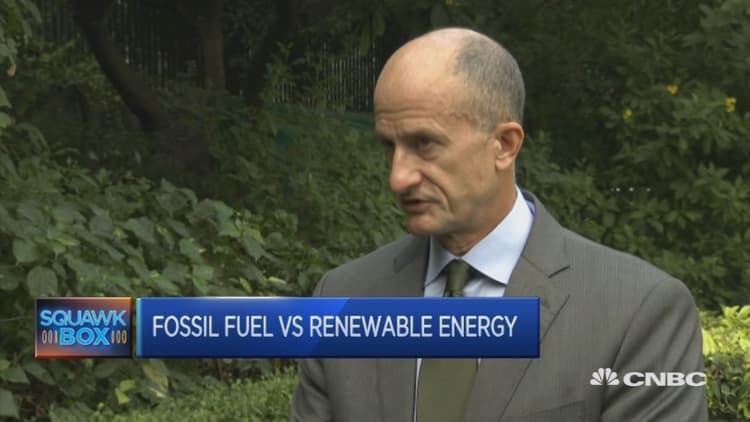The coal industry is in for a period of sluggish growth as global demand essentially peaks in the coming years, the International Energy Agency forecasts in a new report.
IEA expects worldwide growth in coal consumption to average just 0.6 percent between 2015 and 2021 as developed countries continue to abandon the energy source and China's consumption plateaus. That will offset growing demand among emerging nations, particularly in India and Southeast Asia.
"Coal demand is moving to Asia, where emerging economies with growing populations are seeking affordable and secure energy sources to power their economies," said Keisuke Sadamori, the director of the IEA's energy markets and security directorate, in a press release.
The assessment by one of the world's leading energy authorities comes on the heels of a difficult time for coal producers. In 2015, global coal demand fell for the first time since the 1990s. Many coal companies have fallen into bankruptcy as the world remains supplied with more coal than it can use.
IEA expects the turnaround will be anything but spectacular; it projects coal consumption in 2021 will reach 5.63 billion tons of coal equivalent, just barely above 2014 levels.

The driving forces behind coal's slump will only accelerate, in IEA's view.
Growing use of natural gas for generating power, adoption of renewable energy sources and policies aimed at protecting the environment will reduce the appetite for coal in Europe, the United States, and other developed nations.
Meanwhile, developing countries will look to thermal coal as a cheap source of energy as they aim to quickly increase their power capacity. Economic growth and infrastructure spending, particularly in India, will also drive demand for coking coal used for making steel and iron.
Whether coal demand returns to 2014 levels or falls short of the mark will largely depend on consumption in China, which accounts for about half of the world's appetite, IEA said in it's 2016 Medium-Term Market Report.
China's massive economic growth since the 90s produced a "super cycle" for commodities. A subsequent slowdown in economic activity there has been a major drag on coal and other natural resources.
Coal demand is falling in China, and the IEA believes it will continue to dip through 2018 before entering an upward trend through 2021. However, China's coal consumption in 2021 is still expected to be lower than it was eight years earlier.
IEA sees India putting up the largest absolute gains in coal demand through 2021. The subcontinent is projected to grow its consumption by an average of 187 million tons of coal equivalent annually.
The Association of Southeast Asian Nations, which includes countries like Indonesia and Vietnam, will see the biggest gains in consumption, growing at an average 7.2 percent clip each year.
Supply growth is also expected to be anemic — just 0.4 percent annually between 2015 and 2021.
The story on the supply front mirrors the demand picture. India and Australia are expected to produce more coal, Chinese output will be flat, and European and American production will fall, according to IEA.


